
Lenovo ThinkPad X1 Carbon (type 3444-2NM) Ultrabook review
Those of you looking for a business-ready Ultrabook will love the ThinkPad X1 Carbon
Pros
- Build quality
- Keyboard
- Large, smooth touchpad
- Fast SSD
Cons
- Vertical viewing angles a little narrow
- RAM not upgradeable
- Non-standard SSD
- Pricey
Bottom Line
Lenovo's ThinkPad X1 Carbon is aimed at business users who need an Ultrabook management features and better security than a standard model. It's well built, quite comfortable to use, and performs quite well. However, it's not a user-serviceable unit and it could also use a screen with better vertical viewing angles.
-
Price
$ 2,511.00 (AUD)
-
Best Deals (Selling at 3 stores)
If there's one word that you can't use to describe the Lenovo ThinkPad X1 Carbon, it's soft. On the contrary, it's one of the toughest, if not the current toughest 14in Ultrabook on the Australian market, and a lot of that is due to its construction, which features carbon fibre in both the chassis and the lid.
Design and build quality
The carbon fibre construction, combined with solid state storage, means that the X1 Carbon can withstand accidental knocks and drops better than most other Ultrabooks. Meanwhile, its spill resistant keyboard and weep holes allow it to survive moderate-to-substantial liquid mishaps.
Apart from that toughness, it's an Ultrabook with a very good keyboard, plenty of processing power and, dare we say it, good looks. Some compromises have been made in regards to onboard connectivity, but compensation is provided in the form of supplied dongles for VGA and Ethernet. Built in to the base are two USB ports (one which is USB 3.0 and one which is USB 2.0), a full-sized SD card slot, a combination microphone and headphone port, a mini-DisplayPort and an externally-accessible SIM card slot (for the integrated mobile broadband in our test model).
A new style of power connector has been designed for this ThinkPad, primarily to fit the thickness of the chassis, which is about 11mm not counting the rubber stops and the lid. The power connecter is a rectangle instead of a circle and it can be plugged in either way around. It's a very smooth and good looking connector and it's attached to a hefty power brick that's designed to charge the ThinkPad X1 Carbon is very quick time. Other features of the chassis include a physical Wi-Fi toggle, which we love, an extraction vent on the left side and stereo speakers that are inconspicuous, yet produce above-average output in terms of clarity and volume for a notebook of this size and thickness. Dedicated volume buttons are also present.
You get a sense of the X1 Carbon's build quality the moment you pull it out of the box. Despite weighing less than 1.4kg, it feels very sturdy overall, and especially when the lid is closed. It's also very well balanced — there isn't excessive weight towards the rear of the notebook. Furthermore, it feels good to hold thanks to its matte finish, which provides plenty of grip so that the notebook won't slip if you pick it up with one hand. The design of the base tapers towards the front, which gives the Ultrabook a sporty look while it's sitting on a desk, and the thickness of the chassis is different from the front to the back due to the bigger rubber stops that reside near the spine of the chassis. With the lid closed, the X1 Carbon is 22mm thick at the rear (including the stops) and 16mm thick at the front.

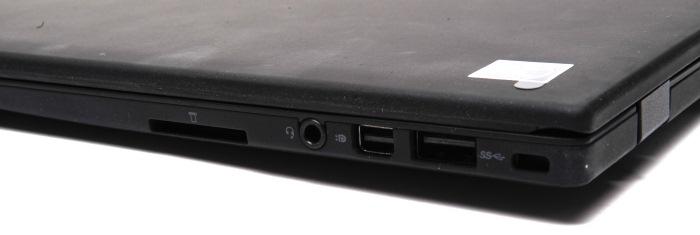

You can't lift the lid open with one hand while the notebook is sitting flat on a desk; the hinges are simply too strong. Conveniently, the hinges do allow the screen to be tilted all the way back until it is lying flat, which we think is useful for a variety of scenarios, from typing notes while standing up (we have been known to do that with Ultrabooks in the past — but mainly the lighter ones such as the Toshiba Satellite), to giving presentations without having the screen obscure your view.
The screen itself measures 14in diagonally and has a native resolution of 1600x900. A matte finish ensures that reflections from light sources behind you won't be a big problem, and there is enough brightness and contrast to make photos and videos look absolutely great. However, the panel has vertical viewing angles that are a little shallow and, depending on the angle at which you are sitting relative to the screen's height, you might end up having to tilt the screen a lot in order to fix contrast and brightness issues. Don't bank on being able to see the screen easily if you tilt it all the way back flat on a desk — unless you are standing up. The limited viewing angles of the screen are perhaps the most disappointing aspect of the X1 Carbon, but despite that, the screen is still of very high quality.
Keyboard and touchpad
For input, the X1 Carbon features Lenovo's famous dual-pointing solution, which is comprised of a TrackPoint in the middle of the keyboard and a large touchpad just below the keyboard. The keyboard itself is a joy to type on. The keys are big, well spaced and they provide an impressive amount of travel considering how thin the chassis is. You get a lot more travel than on other Ultrabooks. Furthermore, the keys feel soft to press and their responsiveness is excellent.

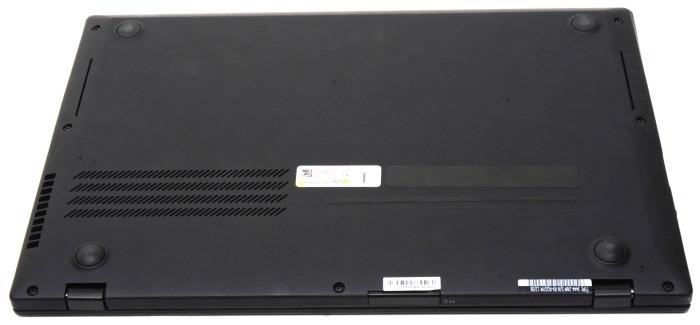
You get a dedicated Print Screen key on the bottom row, there are clearly marked Home, End, Insert and Delete keys at the top, and there are conveniently placed Page Up and Page Down keys just above the left and right arrow keys. However, we do wish the arrow keys were slightly bigger and more spaced out. We like the fact that the keyboard is backlit — there are two intensities to choose from — but there is no timer to switch off the light during idle times. The light is off by default, which means you have to switch it on every time you restart the computer or come out of sleep mode.
The touchpad is 101x61mm and it's one of those clickpad-type devices in which the left- and right-click buttons are located underneath the pad itself. A very smooth finish ensures that your finger will easily slide across the pad and, in fact, we think this is one of the smoothest touchpads on the market. However, the pad did rattle a little when it was tapped. We should point out that we had to update the touchpad driver during our tests. We initially noticed some tracking problems and inaccuracy when tapping. These problems were fixed when we updated the driver from Lenovo's Web site. Two-finger scrolling and three-finger gestures were performed without any problems, and the pad is big enough so that four-finger swipes are also very easy to perform.
One other thing to note is that the touchpad is almost exactly level with the palm rest, which means that with a future driver update, it should be able to support swipe-in gestures that will allow you to more easily make use of the Charms bar and the Switcher in the Windows 8 interface — should you want to upgrade to that operating system.
Configuration and performance
The configuration of the ThinkPad X1 that we tested was anchored by a third generation Intel Core i5-3427U CPU, which is an ultra-low voltage CPU with two cores, Hyper-Threading and a frequency of 1.8GHz. It features Intel HD 4000 graphics, and it was joined by 8GB of DDR3 SDRAM and a 256GB solid state drive (a non-standard SanDisk SD5SG2256G1052E model). It's a configuration that can supply an ample amount of power for office and Web tasks, as well as multimedia playback and encoding tasks (although it's not really designed to be used for taxing processing tasks).
In our Blender3D rendering and iTunes MP3 encoding tests, the Carbon X1 put up times of 45sec and 52sec, which are faster times than the other Core i5-based Ultrabooks we have tested. This was expected due to the slightly faster frequency of the CPU. Its time of 56min in our AutoGordianKnot DVD-to-Xvid conversion test is the same as other Ultrabooks we've tested recently, including the Toshiba Satellite Z930 and HP Envy Spectre XT, both of which feature a slower Core i5-3317U CPU. Its time of 11min 16sec in our DVD-to-MKV test using Arcsoft Media Converter 7 is about 2min faster than what those Ultrabooks could manage in the same test.
Graphics performance was faster than what we've seen from other Core i5-based Ultrabooks, again due to the higher processor frequency, and this was shown in 3DMark06, where a mark of 5405 was attained. This is about 200 marks better than what we're used to seeing.
In the storage department, the X1 Carbon's solid state drive is very fast. In CrystalDiskMark, it put up a read rate of 486.9 megabytes per second (MBps) and a write rate of 421.3MBps. In our own file duplication tests, an average rate of 128.09MBps was achieved. Compared to other Ultrabooks with 256GB solid state drives that we've seen, such as the Dell XPS 13, ASUS Zenbook Prime and Toshiba Portege Z930, the X1 Carbon is an Ultrabook to be reckoned with. Its read rate was not quite as fast as the Toshiba in CrystalDiskMark, but its write rate is so far the quickest we seen. The Dell still holds the fastest file duplication rate. The drive has a 215GB capacity, with almost 14GB reserved for the recovery partition.
Boot times were a little on the sluggish side in our tests; we recorded a cold boot time of 23sec. Resume time was about 2.5sec, while deep sleep resume was about 5sec. Under a full load, the fan kicked in to remove the warm air generated by the CPU, but it wasn't overly loud; during regular usage, it was a very quiet operator. We also didn't notice too much warmth from the chassis after prolonged periods of basic usage. There is a vent on the bottom that you will need to be mindful not to block if you use the Carbon on your lap for long periods of time.
Battery life
The X1 Carbon has an internal battery that isn't easily removable (seven Phillips head screws hold the cover to the base), but it's a battery that can supply the Ultrabook with ample time away from a power outlet. In our rundown test, in which we disable power management, enable Wi-Fi, maximise screen brightness and loop an Xvid-encoded video, the Carbon lasted 4hr 49min. It's a better result than the previous best Ultrabook in this test, the Sony VAIO T Series, which lasted 4hr 30min, but that Ultrabook also had a slightly more powerful 1.9GHz Core i7 CPU.
When we used the Carbon for casual Web surfing, the odd YouTube video and office document creation tasks, it lasted a little over six hours. This was with a screen brightness just under the halfway mark and with the keyboard backlight predominantly off. How much you get out of the standard battery will depend on your usage and power scheme.
The battery can be charged at a rapid rate once it's depleted. In our tests, it reached 80 per cent capacity in about half an hour and it took just over an hour to charge completely. This was achieved with a 90W power supply. Lenovo says that this rapid charging feature won't reduce the battery's charging cycles over time any quicker than a regular battery with a standard charging time. To this end, it supports the battery with the same warranty as the laptop itself, which can be up to three years if you choose that option (for an extra fee).
If you wanted to replace the battery yourself, you would have to spend some time fiddling with wires and ribbon cables. The cover of the unit pops off without much of an effort after you remove the seven screws. The components are held in the bottom part of the chassis and it is the keyboard that lifts up to expose them. You have to be mindful of the ribbon cable that attaches the input peripherals to the motherboard, but it's the type of cable that will pop off if you pull it a little too much accidentally, rather than offer resistance.
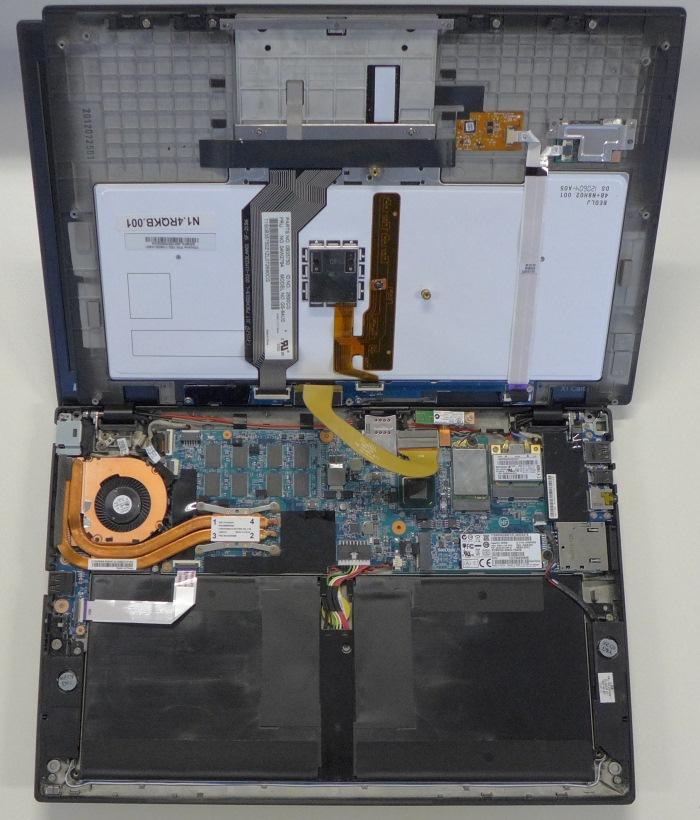
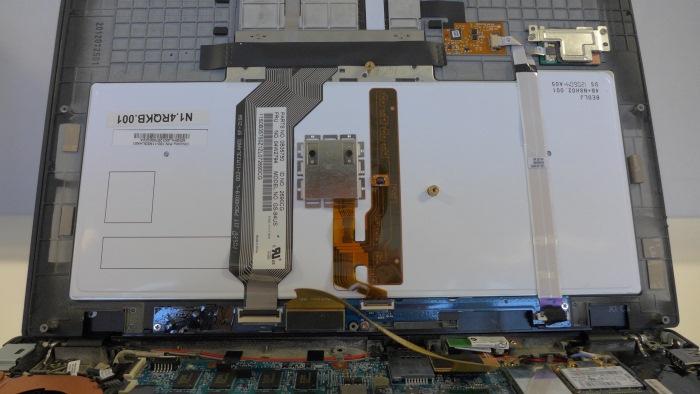
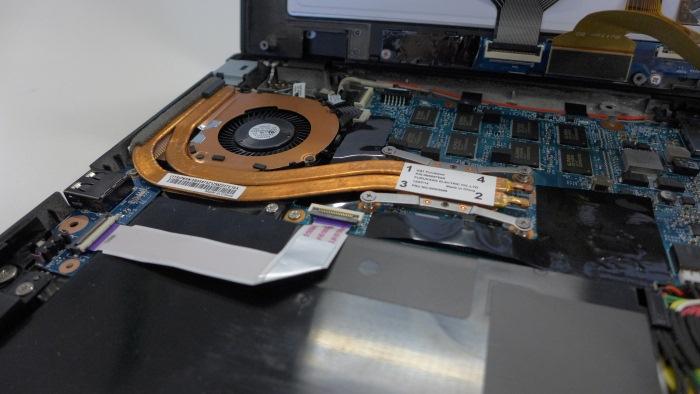

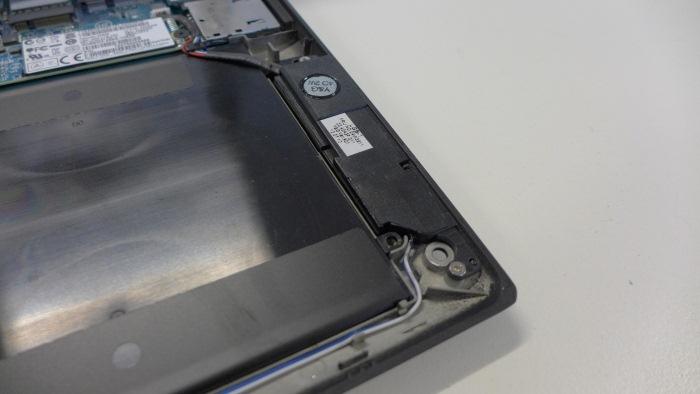
Conclusion
Other features of the X1 Carbon include a webcam and dual integrated microphones (on either side of the webcam), Bluetooth, dual-band Wi-Fi (Intel Centrino Advanced-N 6205S), and mobile broadband and GPS (H5321 gw). We had no problems at all using the laptop on the Optus network with our iiNet SIM card. All we had to do was enter the correct APN through the Windows networking interface and we were up and running. We got a download rate of about 3 megabits per second on this network in our test area in North Sydney.
For security, the Carbon has an integrated fingerprint reader and for management it features a vPro chipset. It's one of the few vPro-capable Ultrabooks on the market, but more will become available as the Ultrabook finds its way into the enterprise.
Overall, this Ultrabook is a beauty. We love the sturdy feel and the very comfortable keyboard, and we had no problems using it after we updated the touchpad drivers and got used to the screen's vertical viewing angles. It proved to be a swift and reliable performer, although we do think it has a few too many bits of pre-installed software. Even though it isn't a user serviceable unit, if you're in business (or even if you're not and you just want a top-notch Ultrabook), then the Lenovo ThinkPad X1 Carbon is a good one to go for.
Related notebook reviews:
• Toshiba Satellite Z930 Ultrabook
• Toshiba Portege Z930 Ultrabook
• Sony VAIO T Series Ultrabook
• HP Envy Spectre XT Ultrabook
• Toshiba Satellite U840W Ultrabook
• Origin EON15-S gaming notebook
• Dell Inspiron 15R 5520 Ivy Bridge notebook
• Medion Akoya P6635 Ivy Bridge notebook
• HP Envy 6-1001tx Ultrabook
• HP Pavilion dv6-7030tx Ivy Bridge notebook
• Sony VAIO E Series 14P Ivy Bridge notebook
• ASUS Zenbook Prime UX31A Ultrabook
• Fujitsu Lifebook U772 Ivy Bridge Ultrabook
• Dell XPS 14 Ivy Bridge Ultrabook
• Samsung Series 9 Ultrabook
• Lenovo ThinkPad X230 Ivy Bridge laptop
• Apple MacBook Pro (15in with Retina display)
• ASUS N56VM Ivy Bridge laptop
• Acer Aspire Timeline Ultra M3 Ultrabook
• Lenovo ThinkPad Edge E530 Ivy Bridge laptop
• Dell XPS 13 Ultrabook
Brand Post

Most Popular Reviews
- 1 Dell U3223QE review: A winning debut for an IPS Black monitor
- 2 HP Spectre x360 16 review: The right 2-in-1 at the wrong time
- 3 Acer K242HYL review: An affordable monitor for any occasion
- 4 GeForce Now review: You bring the games, Nvidia streams the hardware
- 5 Asus ProArt PA279CV monitor review: The go-to for content creators on a budget
Latest News Articles
- Fortnite returns to the iPhone (sort of) courtesy Xbox Cloud Gaming
- iPad buying guide 2022
- Best Mac for music production
- Apple’s 3-meter Thunderbolt 4 cable for AU$249 is the only game in town
- Apple adds two popular classic iPads to ‘vintage’ list
Resources
Macworld
What's new, plus best mac-related tips
and tricks

Business Centre
The latest business news, reviews, features and whitepapers

Videos
Watch our video news and reviews from around the world

Guides
Comprehensive buying guides, features, and step-by-step articles

PCW Evaluation Team
Pedro Peixoto
Aruba Instant On AP11D

Set up is effortless.
Cate Bacon
Aruba Instant On AP11D

The strength of the Aruba Instant On AP11D is that the design and feature set support the modern, flexible, and mobile way of working.
Dr Prabigya Shiwakoti
Aruba Instant On AP11D

Aruba backs the AP11D up with a two-year warranty and 24/7 phone support.
Tom Pope
Dynabook Portégé X30L-G

Ultimately this laptop has achieved everything I would hope for in a laptop for work, while fitting that into a form factor and weight that is remarkable.
Tom Sellers
MSI P65

This smart laptop was enjoyable to use and great to work on – creating content was super simple.
Lolita Wang
MSI GT76

It really doesn’t get more “gaming laptop” than this.
Featured Content
- Which Lenovo Laptop Should I Buy?
- Every TV in Samsung's 2022 line-up: OLED, Neo QLED and more!
- Top 10 best Android and Apple phones for under $600
- Everything you need to know about Smart TVs
- What's the difference between an Intel Core i3, i5 and i7?
- Laser vs. inkjet printers: which is better?










